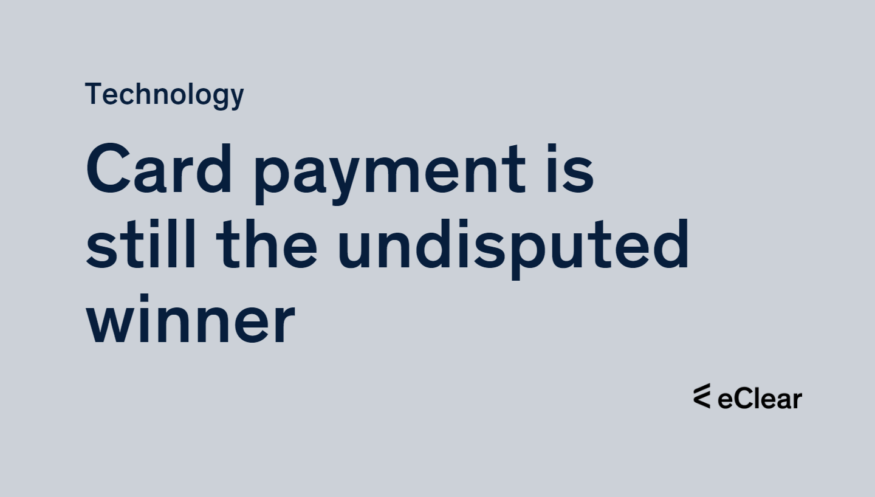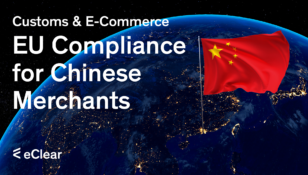“Do you pay cash or by card?” This all-too-familiar phrase has been uttered billions of times over the past 50 years. Nowadays, just after cash payments were almost frowned upon during the pandemic – thanks to customers’ hygiene concerns – cash payments are becoming less and less important: “Buy now – pay later!” or even “We offer Affirm, Afterpay and Klarna. And if you prefer to pay with cryptocurrencies, we accept Bitcoin, Ethereum, Tether …” are now phrases that consumers would not even have dared to dream of a few years ago. Providers such as Apple Pay, Google Pay, PayPal, and Venmo have experienced enormous growth in the past three years, and consumers currently expect alternative payment methods from retailers that they thought were still a long way off 5–10 years ago.
The world of payment services is reshaping
Alternative payment methods have become increasingly popular with both consumers and retailers. In 2021, the five largest BNPL (buy now pay later) companies (Affirm, Afterpay, Klarna, PayPal, and Zip) processed $24 billion worth of purchases made by more than 180 million consumers – a tenfold increase from 2019, according to the Consumer Financial Protection Bureau.
Meanwhile, Apple Pay and other digital wallets have gained wide acceptance among retailers, while many also accept PayPal. And Venmo – initially intended for “peer-to-peer” payments between individuals – is now accepted by CVS, Abercrombie & Fitch, Uber Eats, Hulu and Foot Locker, among others.
Further, crypto is slowly catching on. Major US brands currently accepting cryptocurrencies include Chipotle, Regal Cinemas, Whole Foods Market, Baskin-Robbins, and GameStop. And Subway is experimenting with accepting bitcoin in three of its restaurants in Berlin.
These are the most popular payment methods at the moment
Mobile Payments: This refers to using smartphones or other mobile devices to make payments in shops, online or via mobile apps. Mobile payments can be made using various technologies, including NFC, QR codes and SMS.
Digital Wallets are virtual wallets where users can store their credit and debit card details and other payment information in a secure digital format. Users can make payments quickly and easily without entering their card details each time.
Cryptocurrencies are digital or virtual currencies that use cryptography to secure and validate transactions. Bitcoin and Ethereum are the best-known digital currencies, but there are also many alternatives.
Biometrics uses biometric data, such as fingerprints or facial recognition, to authenticate payments. This technology is becoming increasingly popular because it is more secure and convenient than traditional authentication methods such as PINs or passwords.
Social Payments: This refers to the ability to send money or make payments to other people via social media platforms.
These are just a few examples of the new and exciting payment systems currently being developed and introduced worldwide. As technology improves and more people become familiar with digital payments, we will see even more new payment systems. That’s enough to do any business owner wonder. Is there a risk of being too accommodating in accepting payments? And is there a risk of needing to be more accommodating? The answer to both questions is yes. Nevertheless, this assumption applies predominantly to the US market.
Where does the demand for alternative payment methods come from?
Retailers and consumers can enjoy a plethora of alternative payment service providers. The demand for alternative payment options comes from a variety of sources. One main reason is the growing number of people using smartphones and other mobile devices to shop online and pay in shops. Mobile payments, such as Apple Pay and Google Wallet, make it easy for these customers to shop quickly and easily with their mobile devices.
Another reason for the demand for alternative payment options is the growing number of people using digital currencies such as Bitcoin, Ethereum, and Litecoin. This primarily applies to the younger generation, who are more familiar with digital currencies and like to use them.
Another factor is the desire for more security and more convenient payments that are more transparent and traceable. Biometric payment methods, for example, offer a more secure way of authenticating transactions than traditional methods such as PINs or passwords.
Similarly, the trend towards a cashless society and the desire to reduce the costs associated with cash handling are pushing retailers to accept alternative payment methods.
Overall, the demand for alternative payment methods is driven by various factors, including changing consumer behaviour, technological advances and the desire for more secure and convenient payments.
“Consumers have more payment options than ever before,” says Zachary Aron, head of banking and capital markets at Deloitte Consulting. And when one retailer accepts a new payment method, the public demands that other retailers do the same. “It’s a real competitive advantage for retailers to personalise the payment experience.
In some ways, the diversity of payment methods is a natural outgrowth of changes in how employers pay employees, according to Kimberlee Josephson, associate professor of business administration at Lebanon Valley College.
“Given that alternative forms of compensation have been on the rise in the workplace for some time now – it’s no longer just about salary, but also position benefits and perks – it’s only natural that consumers are also looking to the marketplace for alternative forms,” Josephson says.
How strong is the demand?
Given the growing popularity of alternative payments, retailers widely accept them. Of the retailers surveyed by Forrester for the NRF’s 2022 State of Retail Payments report, 80% accept Apple Pay or plan to do so within 18 months, followed by 65% for Google Pay. Online, 78% accept Apple Pay, and 74% accept PayPal or plan to do so. Almost half (43%) accept at least one BNPL (BuyNowPayLater) option online.
Still, alternative payments account for only a small percentage of transactions and do not threaten the dominance of credit and debit cards in the payments market. According to the Federal Reserve, 76% of personal purchases in 2021 were made with credit or debit cards and 19% with cash. Digital wallets accounted for only 2.6% of card payments – not total payments – in 2020, according to the Fed.
The use of digital wallets has increased in the past two years, but Apple Pay, which handles three times as many transactions as the No. 2 digital wallet, Google Pay, still accounts for only 2.4% of in-store transactions, such to the 2022 survey by PYMNTS.com. The percentages for other alternative payments are even lower.
And BNPL’s $24 billion in transactions? According to the Nilson Report, that compares to $9.4 trillion in credit and debit card transactions last year.
Compared to other alternative payments, only 4% of retailers have adopted Bitcoin online, while only 2% offer another crypto payment option, according to the NRF payments study. And 65% have yet to make plans to do so in the next three to five years, citing a lack of consumer demand and concerns ranging from lack of stability to money laundering.
Retailers like the idea of alternative payments because they could one day offer relief from the high “swipe” fees that banks and card networks charge for processing credit and debit card transactions, says Leon Buck, NRF vice president for government relations, banking and financial services. These fees rose 25% last year to a record $138 billion and have doubled in the past decade. But as long as cards dominate the market, he says retailers will focus on getting swipe fees under control.
“Alternative payments are a welcome innovation, but still a long way from creating real competition in the payments market,” Buck says. “Remember that a digital wallet is not really an alternative. It is simply an electronic form of credit and debit card storage, and most digital wallet transactions are still card transactions that incur swipe fees. Other methods like Venmo are alternatives, but have not yet established themselves far enough in the market to make a difference.”
How strong is the demand for alternative payments in Europe?
Demand for alternative payment options is relatively high in Europe, and mobile payments and digital wallets are widespread in many countries.
In some countries, such as the Nordic countries, cashless payments, especially contactless payments, are widespread and have become the norm for everyday transactions. This is due to the widespread use of contactless terminals and the high use of debit and credit cards in these countries, which allow people to make small transactions easily.
Europe is also leading the adoption of digital wallets. Many consumers use mobile payment platforms such as Apple Pay and Google Pay to carry out transactions.
Cryptocurrencies are also growing in popularity in Europe, although they still account for a relatively small share of the overall payments market.
Another trend in Europe is the use of open banking and APIs. This allows third-party providers, fintechs, to access account data to enable new services and payment methods, such as instant payments, and allows consumers to compare and choose the best options for them.
Overall, the demand for alternative payment options in Europe is driven by many factors, including the high usage of debit and credit cards and the increasing adoption of mobile payments and digital wallets. And with the growing push towards cashless payments and the emergence of new technologies such as open banking, it is likely to continue to grow.
What’s next for alternative payment methods?
There are several areas where alternative payments are likely to develop in the coming years. Some key trends and technologies to watch are:
Mobile Payments: Mobile payments will continue to grow in popularity as more consumers use their smartphones and other mobile devices to purchase in shops and online.
Digital Wallets: Digital wallets are likely to become even more widespread, making it easier for consumers to make payments and securely store their personal and financial data.
Biometric data: Using biometric features such as fingerprints or facial recognition to authenticate payments is likely to become more widespread.
Kryptowährungen: Cryptocurrencies will likely become more prevalent and adopted in the coming years. Governments and central banks are exploring their use, and some plan to launch their digital currencies.
Open Banking and APIs: Open Banking could enable a new era of innovation in alternative payments by opening financial data to authorised third-party providers to allow new payment methods and services.
Social Payments: The use of social media platforms to make payments to other people. This area has grown recently and is expected to continue.
Internet of Things (IoT): The Internet of Things (IoT), where devices are becoming smarter and more connected, will provide opportunities for new alternative payment methods, e.g. payments via household appliances, cars, etc.
It is important to remember that new technologies and trends will also emerge. The payments industry is constantly evolving, and we expect more unique and innovative payment systems to emerge as technology improves.
It remains to be seen which alternative payment service providers will become permanently established. Still, one thing is clear: whether stationary retail or internationally operating platforms – sustainable success is only possible with the payment mentioned above methods.
Source: nrf.com







